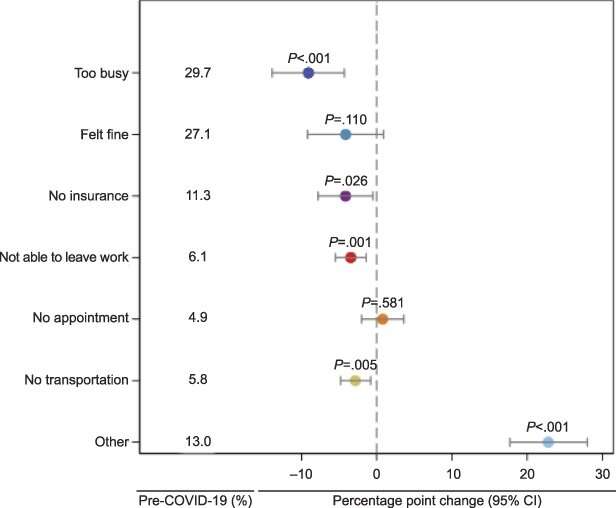Postpartum visits declined during COVID-19, especially among Black, young and uninsured women


A new study by researchers at Brown University showed that the pandemic further restricted access to postpartum care, potentially exacerbating existing health care disparities.
Attendance at postpartum health care visits declined by almost six percentage points during the COVID-19 pandemic—with uninsured women, Black women and women under age 19 facing the sharpest decreases in visits, according to a new study by Brown University researchers.
The study, published in the journal Obstetrics & Gynecology, showed that the pandemic exacerbated existing disparities in postpartum care.
“Our study found that groups who already faced disproportionate barriers to care—Black and Hispanic women, young women, and women without postpartum insurance coverage—experienced the greatest declines in postpartum visit attendance during the pandemic,” said study author Meghan Bellerose, a Ph.D. student at Brown University’s School of Public Health.
“These are the same groups who experience higher rates of postpartum complications and maternal mortality, so it’s imperative that we understand the factors preventing them from receiving important pregnancy care.”
Bellerose and co-author Maria Steenland, a Brown assistant professor of health services, policy and practice (research), used Pregnancy Risk Assessment Monitoring System data from 2016 to 2020—information maintained by the U.S. Centers for Disease Control and Prevention aggregating annual surveys of people with a live birth in 45 states, Washington, D.C., and New York City. They determined that during the first nine months of the COVID-19 pandemic, overall postpartum visit attendance declined by 5.8 percentage points.
The steepest decline was shown by individuals without postpartum insurance, among whom visit attendance dropped by 11.4 percentage points. Visit attendance among Black women and women under age 19 each dropped by 9.9 percentage points.
While some common barriers to attendance before the pandemic—like being “too busy,” an inability to leave work and insufficient access to transportation—existed before the pandemic, additional challenges worsened or were the result of COVID-19, including lack of child care and fear of leaving home due to the virus.
To mitigate these barriers in the future, the study authors recommend systematically addressing health policy and health system challenges that impede postpartum visit attendance—before the next pandemic or another health care crisis.
“To reduce ongoing disparities in postpartum care, clinical practices must ensure that care is provided in a way that accommodates the preferences and needs of all patients—including postpartum people who don’t have broadband access at home or who face ongoing barriers due to transportation, child care and work schedules,” Steenland said.
More information:
Bellerose, Meghan et al, Association Between the Coronavirus Disease 2019 (COVID-19) Pandemic and National Disparities in Postpartum Visit Attendance, Obstetrics & Gynecology (2022). DOI: 10.1097/AOG.0000000000005014
Journal information:
Obstetrics & Gynecology
Source: Read Full Article